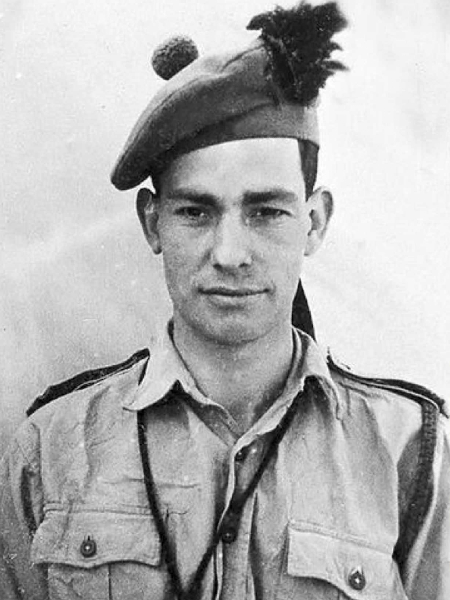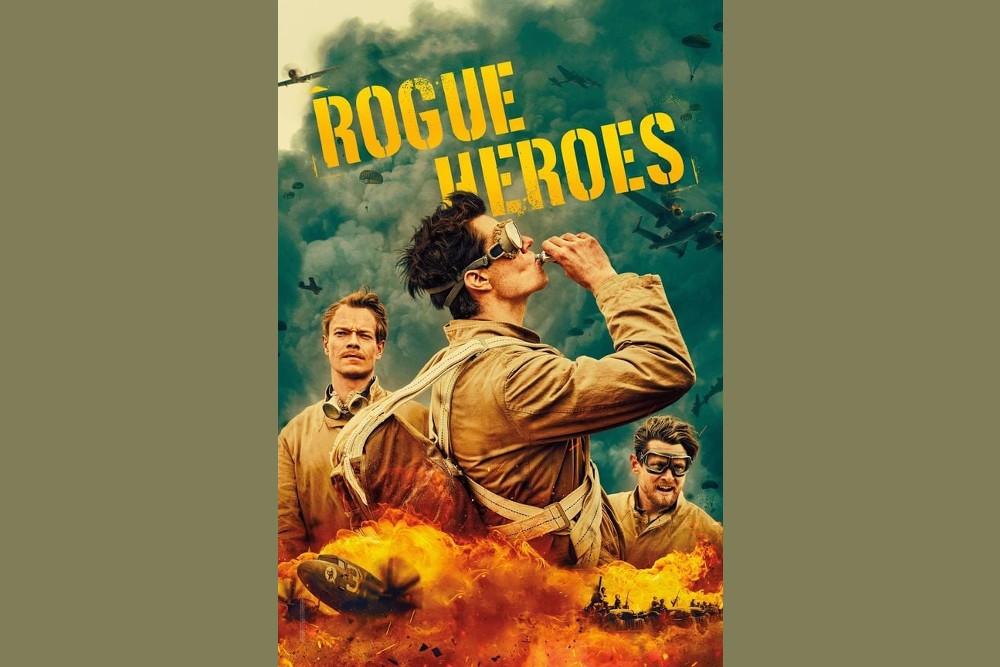Fraser, William (Bill)
- Date of birth:
- January 4th, 1917 (Aberdeen, United Kingdom)
- Date of death:
- January 22nd, 1975
- Service number:
- 2876787 / 132513
- Nationality:
- British
Biography
William (Bill) Fraser (1917-75) was a highly experienced, successful and decorated World War II veteran. He joined the army in 1936 following in the footsteps of his father and grandfather. He was posted to the Gordon Highlanders in 1937 and left for France with the British Expeditionary Force in 1939. Returned to England late that year to attend officer training and was promoted to 2nd Lieutenant on 25 May 1940.
He immediately enlisted in the newly formed commando forces and attended training for this with 11 Commando and was active with Force Z/Layforce and 11 Commando in Cyprus and the Middle East in 1941. Transferred noted as major to the SAS/L Detachment in August 1941 and was also involved in Middle East operations until 1943.
Joined the new SRS (Special Reconaissance Service) in 1943 and experienced the landings in Sicily and later mainland Italy. Returned to England in late 1943.
Returned to the SAS in 1944 and was active in France (Operation Houndsworth) Belgium and Germany. Discovered Bergen-Belsen there as part of a reconnaissance unit. Was still active in Norway after the German surrender for rounding-up duties and returned to England permanently on 25 August 1945.
This is only a fraction of William Fraser's impressive record of service. Zie voor de volledige staat van dienst
- Major William Fraser MC
Do you have more information about this person? Inform us!
- Period:
- Second World War (1939-1945)
- Rank:
- Lieutenant
- Awarded on:
- April 23rd, 1942
"On the night 21st 22nd Dec 1941 this officer carries out a successful operation on the aerodrome EAST of AGEDABIA. He led his part of 4 men through enemy positions located and fixed by observation during the day of the 21st, and succeeded in reaching the aerodrome without detection. He destroyed 37 aircraft, a bomb dump and fuel supplies and withdrew his party without loss, through enemy patrols attempting to intercept him."
Recommended by David Stirling
- Period:
- Second World War (1939-1945)
- Rank:
- Temporary Major
- Unit:
- "A" Squadron, 1st SAS Regiment, Special Air Service (SAS), British Army
- Awarded on:
- March 29th, 1945
Major Fraser himself lead many mobile patrols. While on one of these on Aug 29th Major Fraser in a jeep unexpectedly came to a main road along which a German troop carrying convoy was moving. Major Fraser immediately opened fire, called up his section of six men, and continued to engage the enemy for half an hour with two Bren guns and carbines before withdrawing, causing many casualties and much confusion. Major Fraser then withdrew along a side road which ran parallel to the main road and engaged another convoy on the main road…causing confusion, though casualtes could not be observed.
Major Fraser then withdraw the section into a wood to have something to ear and reload magazines etc before got dark…there a third convoy was heard approaching leaving the section to continue the work in charge of an NCO Major Fraser, with one man and a Bren gun crawled over to the edge of the main road and engaged the convoy at fifty yards range.
This time they were more on the alert and MGs, mortars and a bigger gun were fired off in all directions. Major Fraser continued firing until confusion was completely rife among the enemy. He then went back to his section and withdrew them for two miles. Two hours later the ‘battle’ was still heard to be raging. Next morning while visiting the scene of his first battle, two German cars with seven officers aboard, came down he road and all were destroyed.
Throughout the three months that he was behind enemy lines, Major Fraser’s untiring leadership and spirit kept his men alert and their morale high and kept the enemy guessing and continually harassed. Major Fraser was entirely responsible for the great success of the operation [Houndsworth?] and his courage and resource were of the highest order."
Awarded as bar on the ribbon of the first medal.
Sources
- Photo 1: Anthony Charles Heaford
- - SAS - Fraser, William (Bill) | Special Forces Roll Of Honour
target="_blank">https://www.thegazette.co.uk/London/issue/36892/supplement/394/data.pdf
- https://www.thegazette.co.uk/London/issue/34861/supplement/3265/data.pdf
- Recommendation for Award for Fraser, William Rank: Lieutenant Service No: ... | The National Archives
- Recommendation for Award for Fraser, William Rank: Captain Service No: ... | The National Archives
- Recommendation for Award for Fraser, William Rank: Lieutenant Service No: ... | The National Archives





